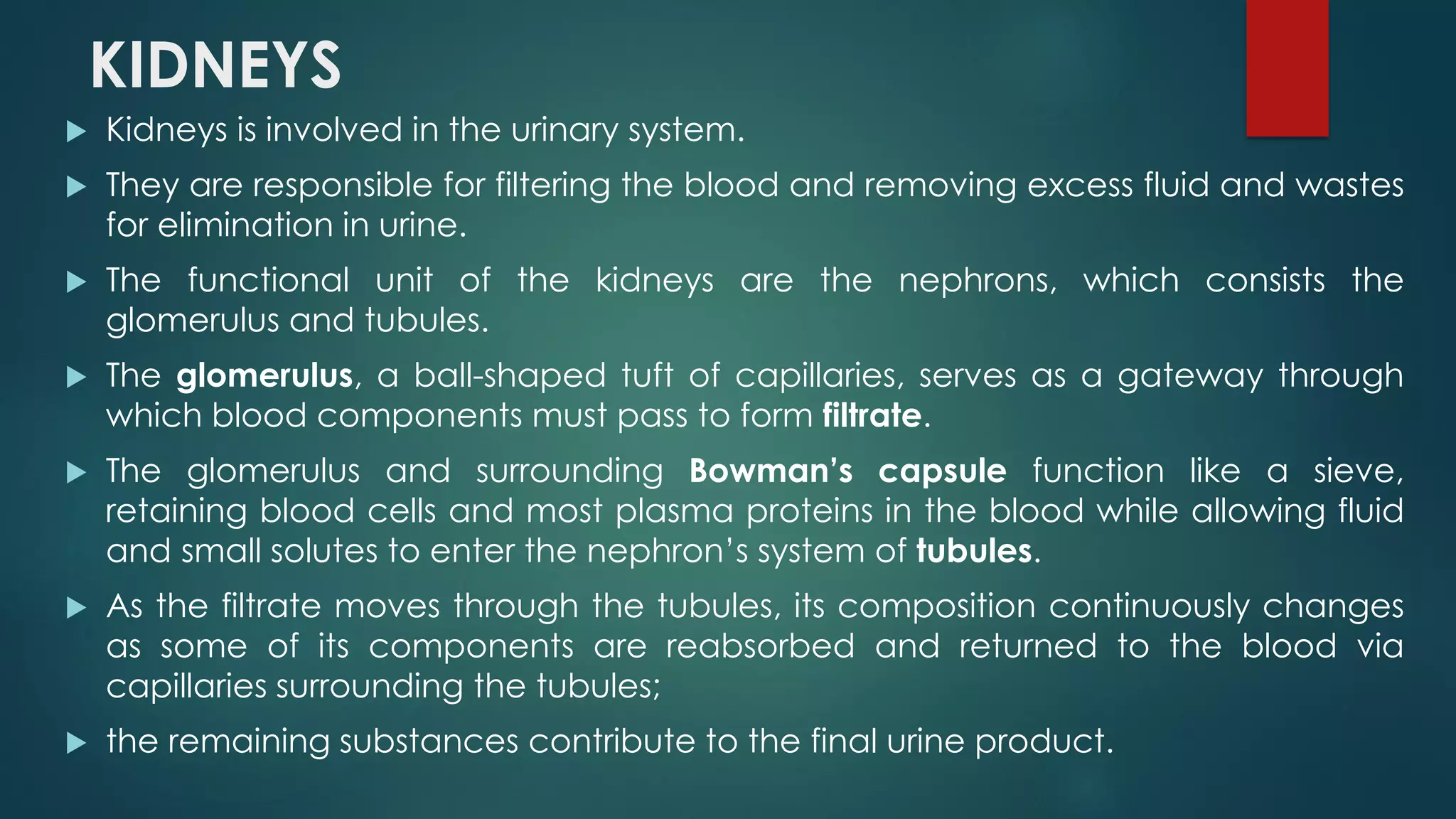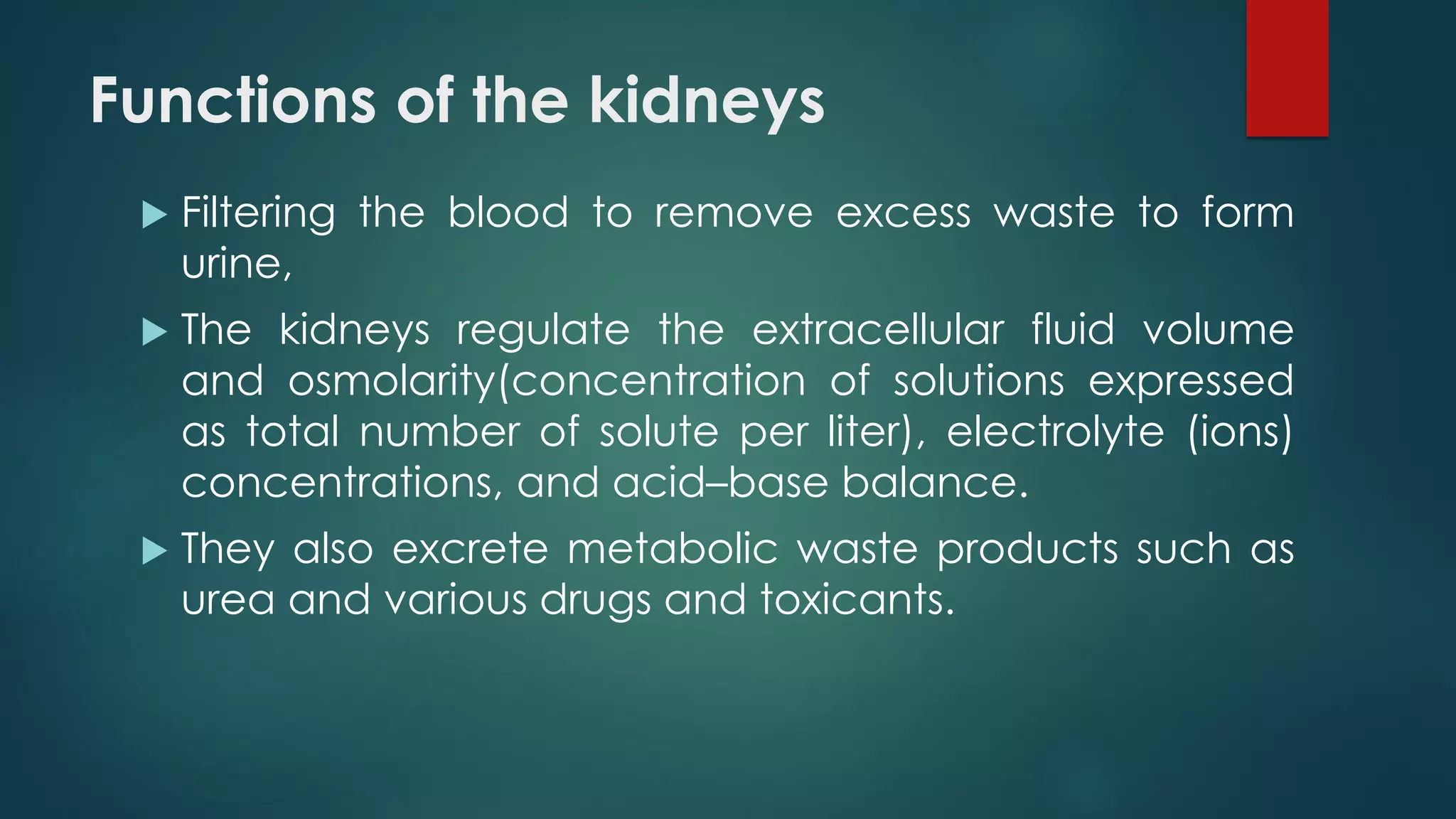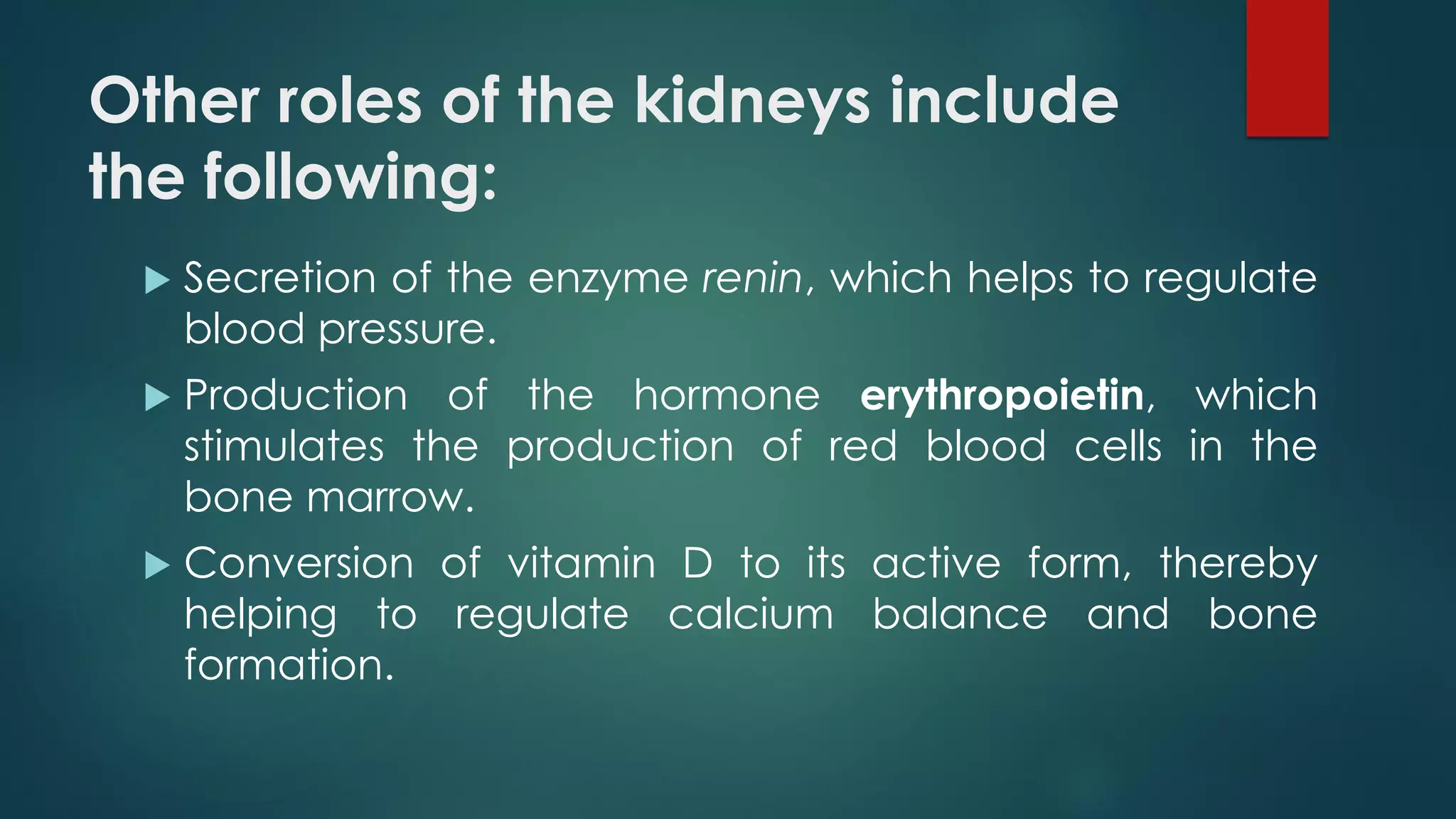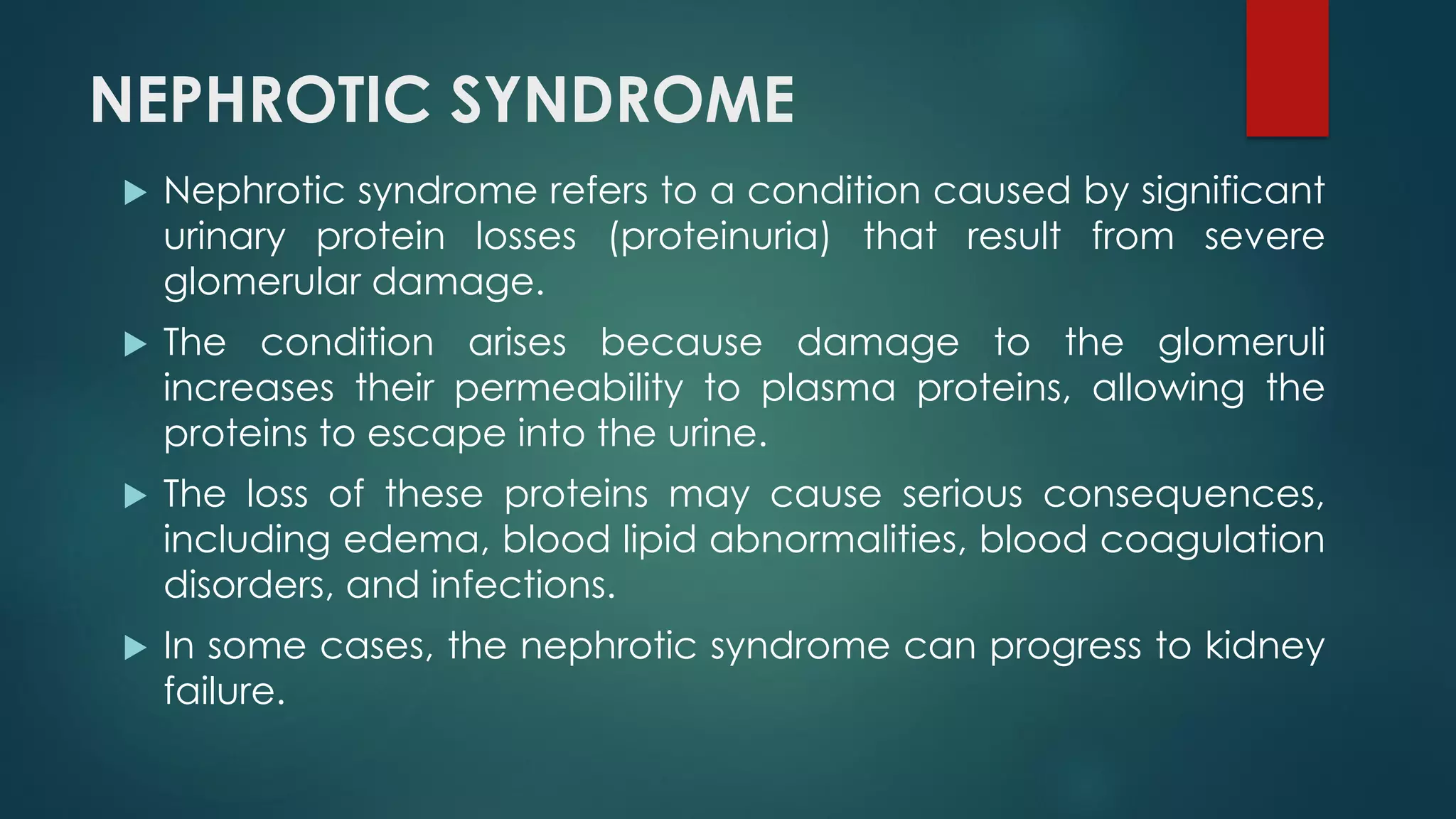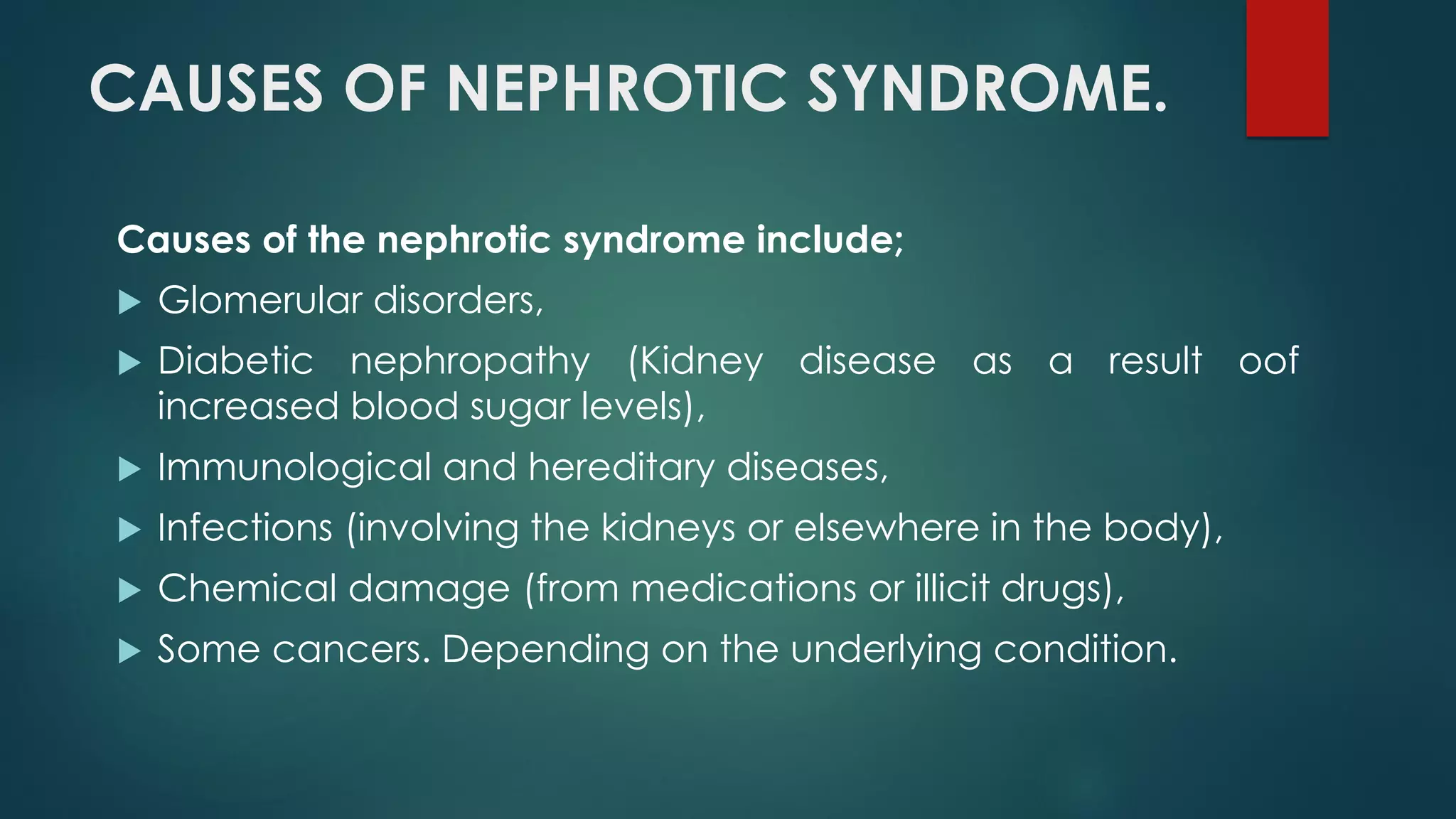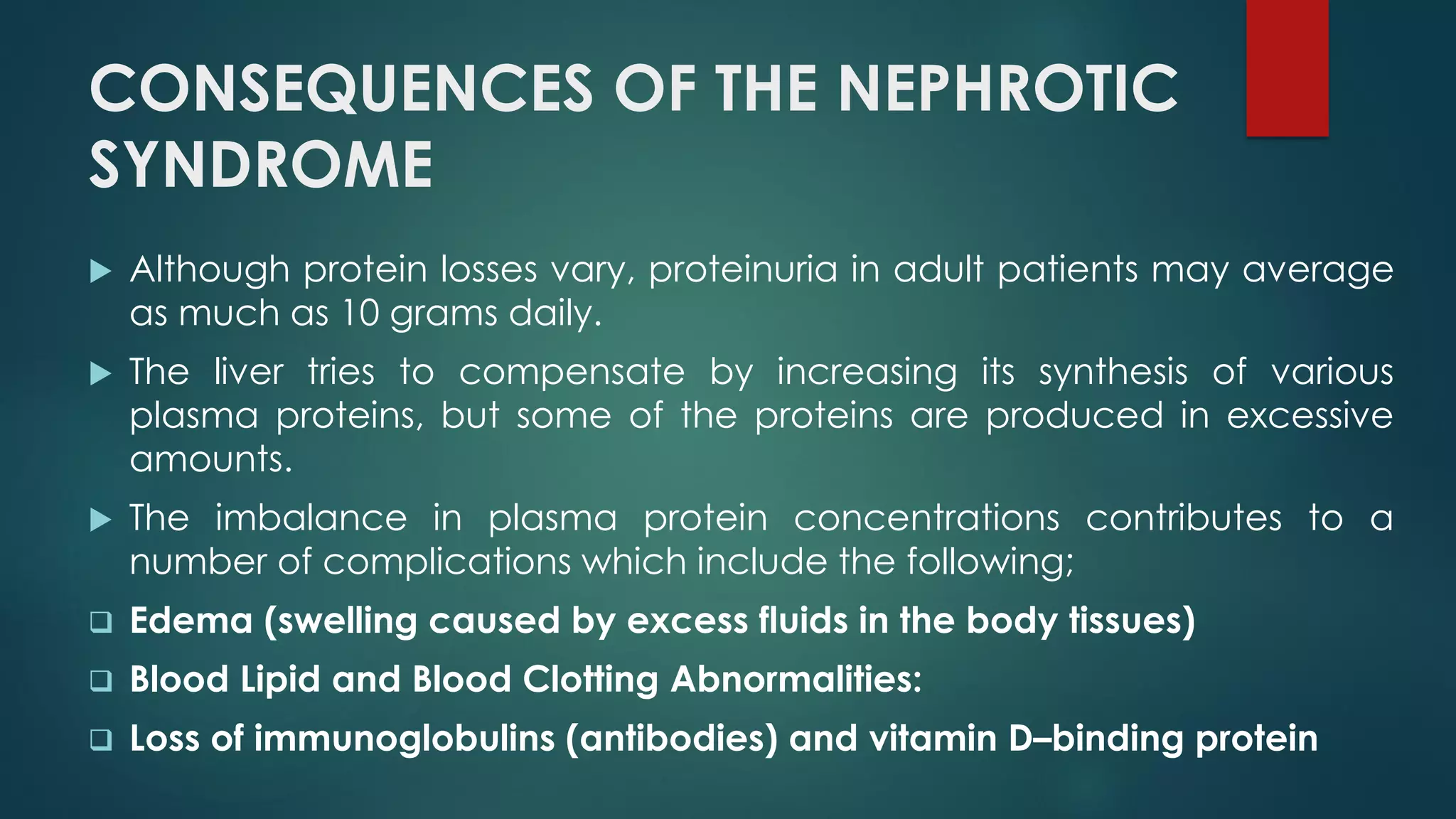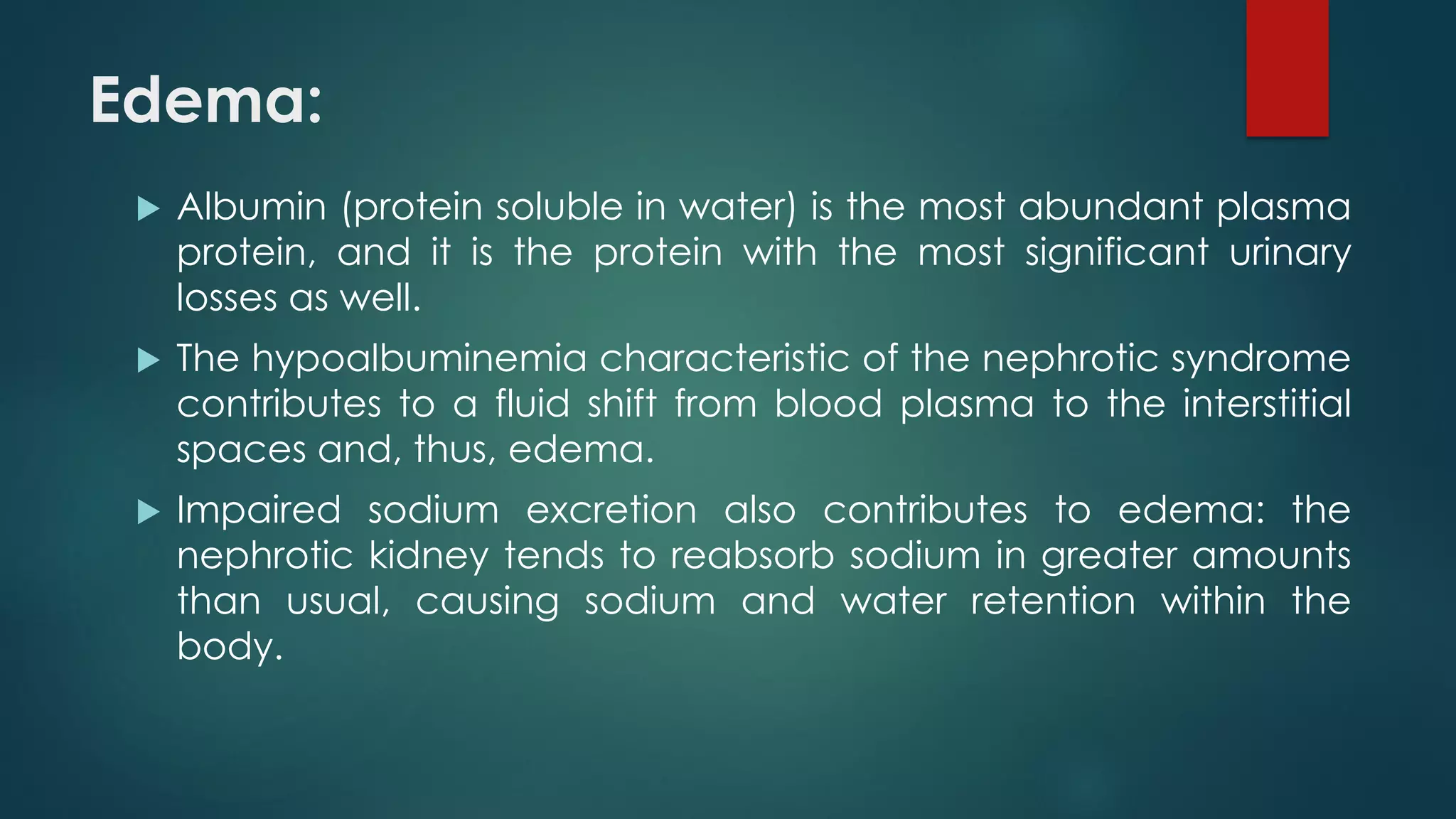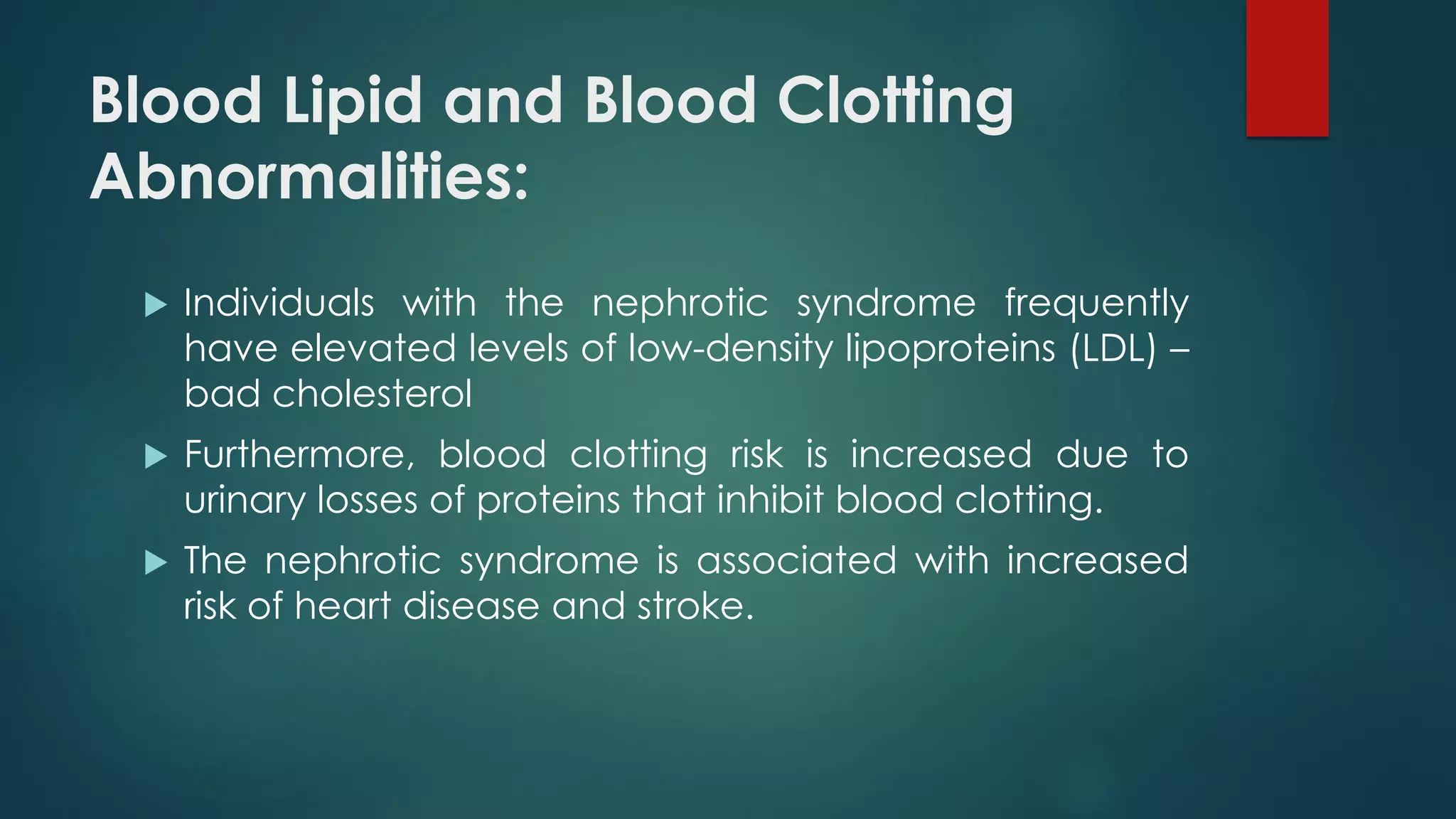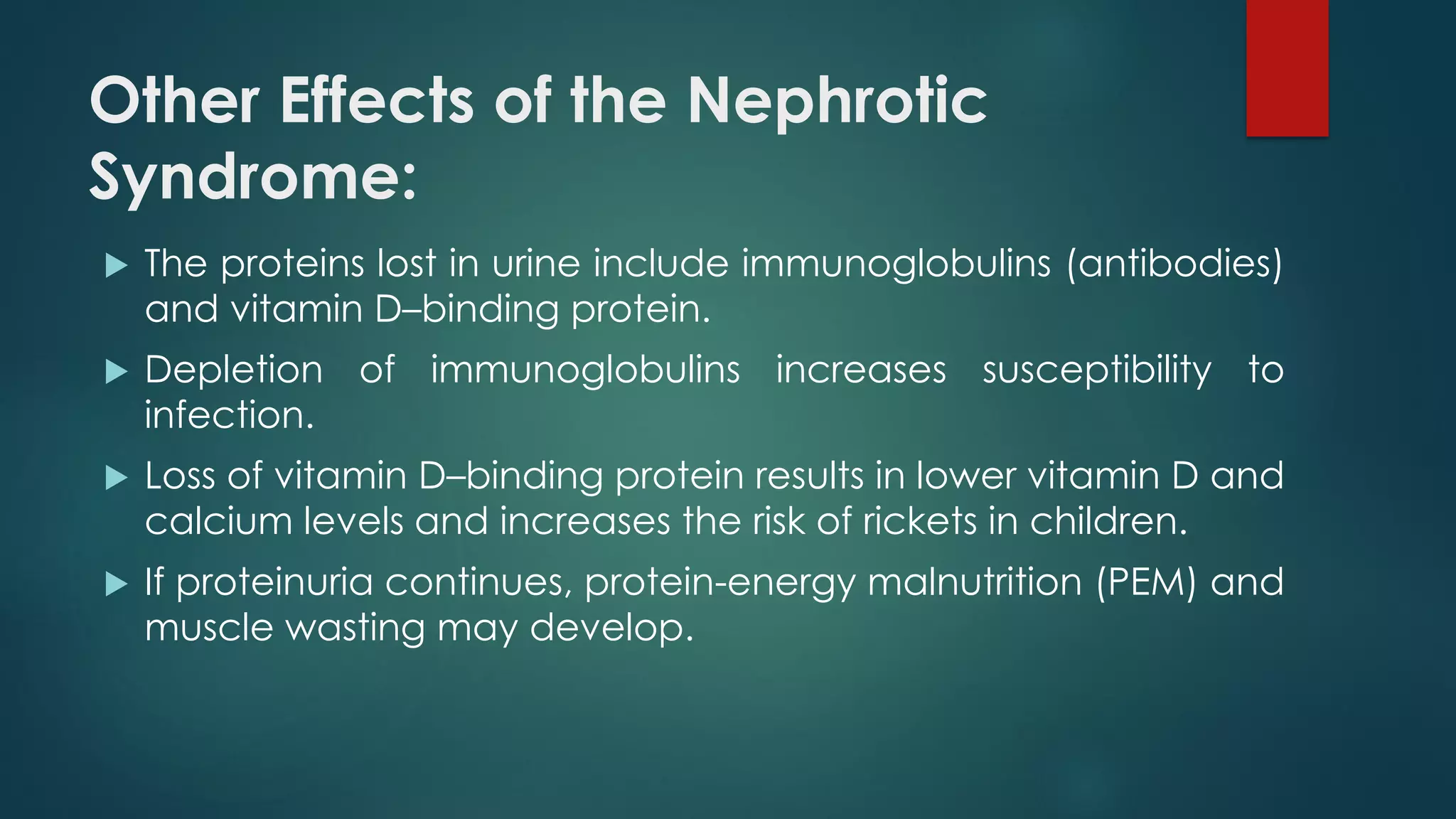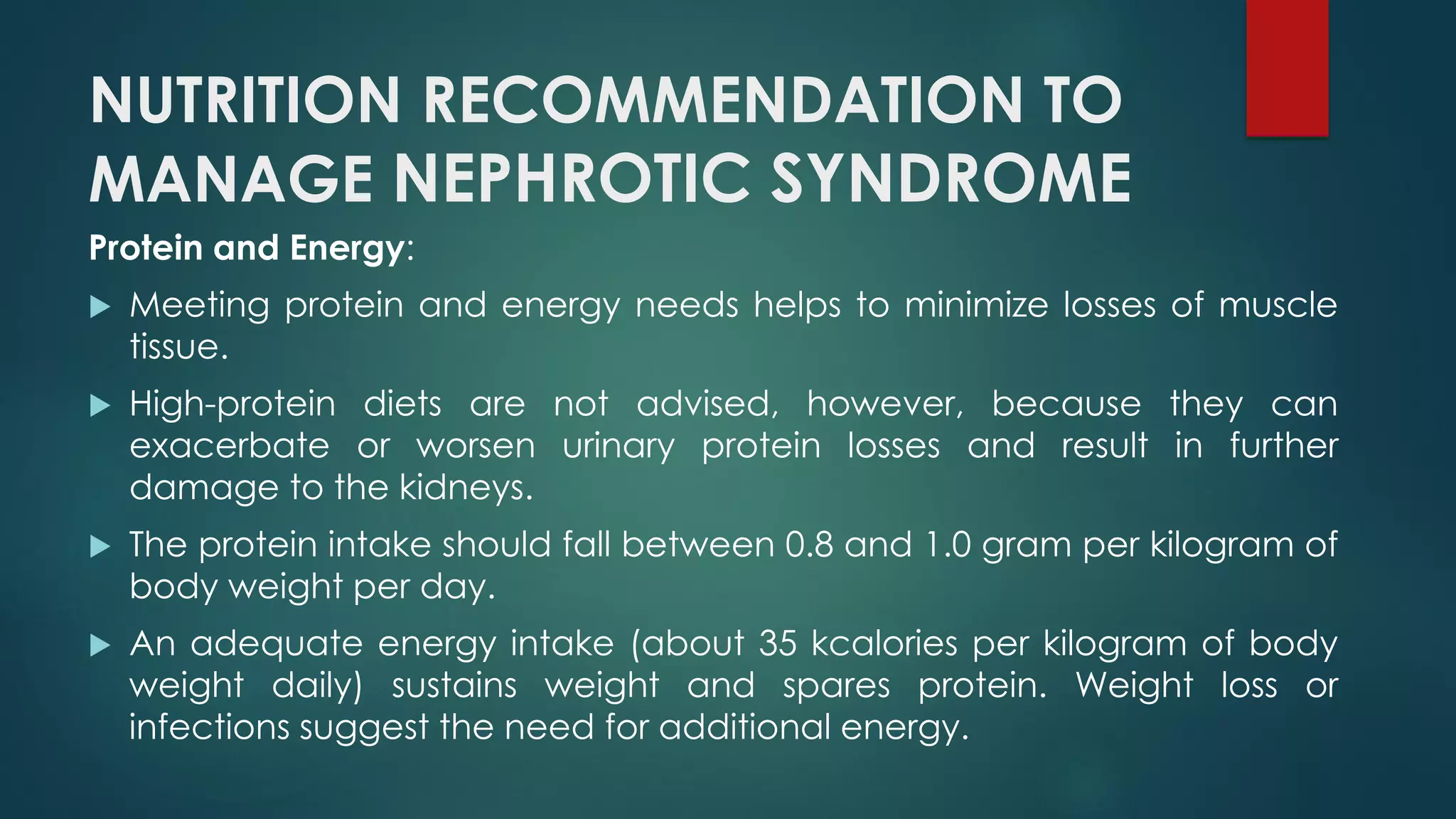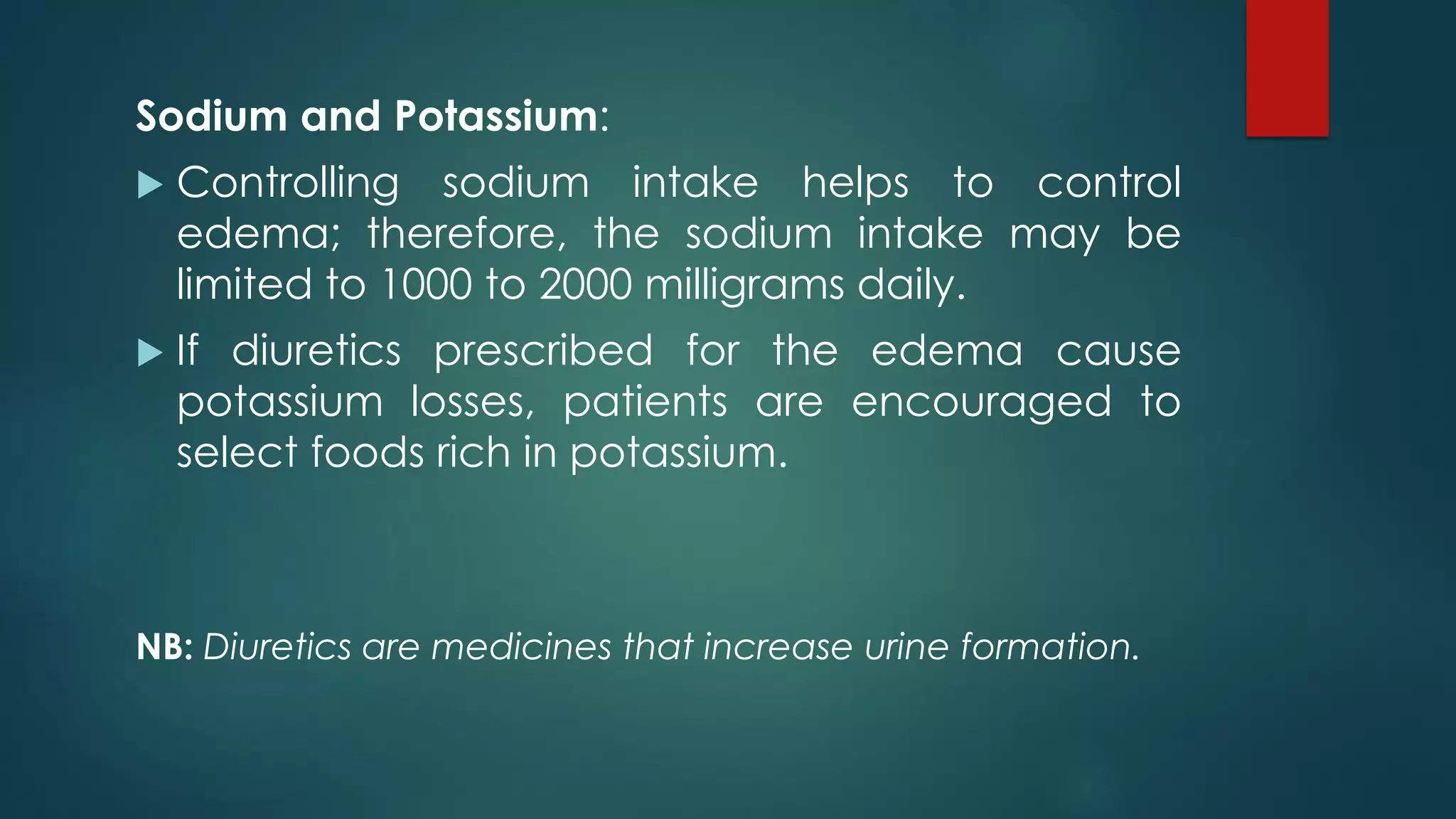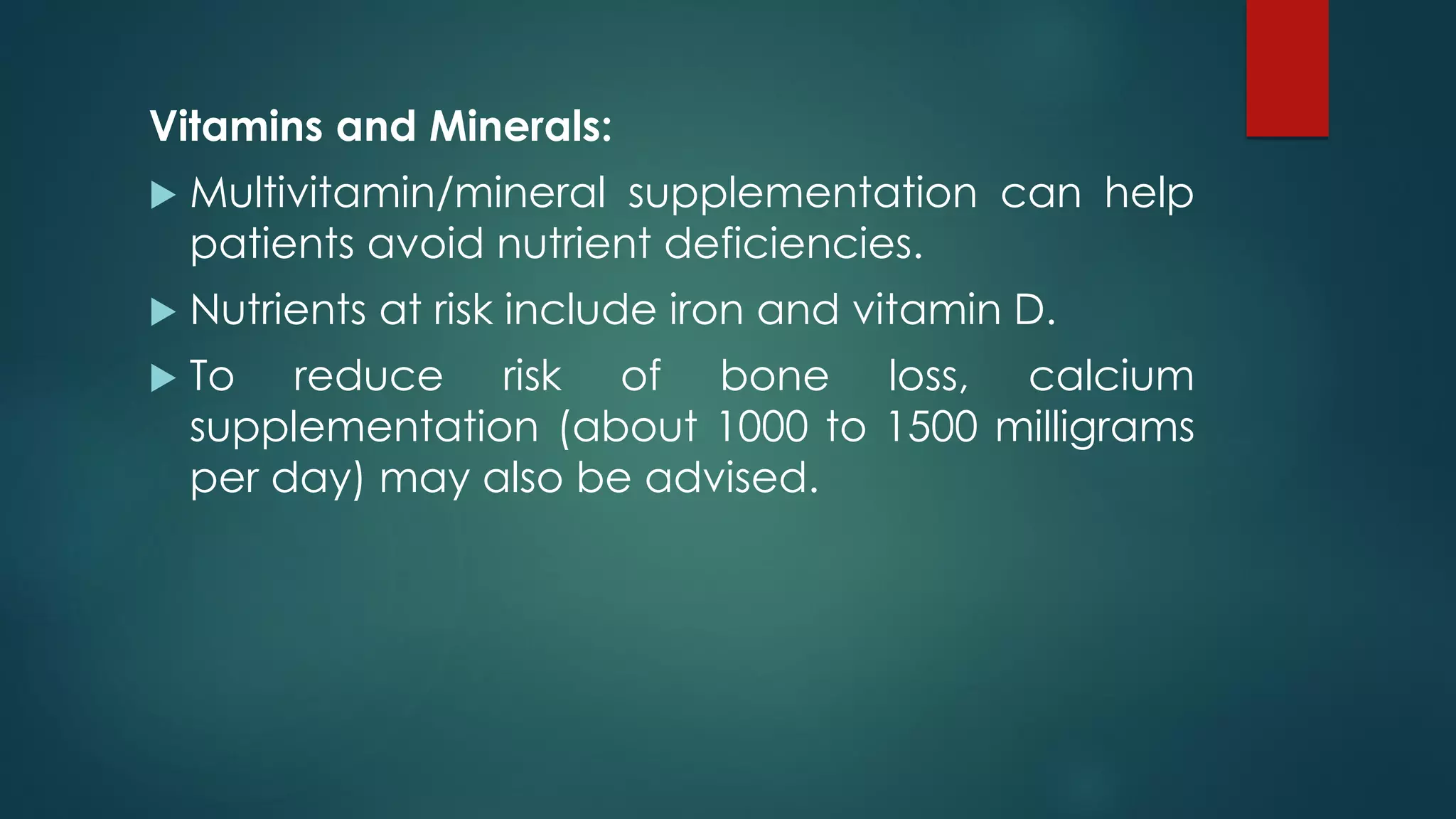The document discusses nutrition and renal diseases, focusing on nephrotic syndrome. It describes how nephrotic syndrome results from kidney damage that allows proteins to leak into the urine. This causes edema, lipid abnormalities, and infection risks. Treatment focuses on the underlying cause while managing complications through diuretics, ACE inhibitors, and nutrition therapy to prevent malnutrition and correct electrolyte imbalances. The nutrition recommendations are to meet protein and energy needs while limiting sodium, saturated fat, and refined sugars.

